Running Like a Girl
- At March 08, 2012
- By nesthome
- In Blog
 0
0
Every now and then a book comes along at just the right moment. I was enjoying my perch on the fence, ambivalent about whether or not to sign up for this spring’s Iron Girl half-marathon. Then I happened upon Run Like a Girl: How Strong Women Make Happy Lives, took it home, and within five pages knew that I will run the race.
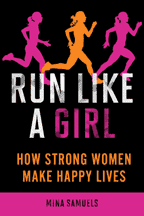 This book inspires. Author Mina Samuels recounts the stories of dozens of women athletes (almost all of them ordinary gals) and what athletics has done for them. She reclaims the expression “run like a girl” and offers it as a new mantra for our efforts. Running like a girl is “Getting out there. Challenging ourselves. Finding new possibility within. Finding strength in our own accomplishments. … accessing our ageless girl spirit, where the enthusiastic ‘let’s go’ of youth meets the ‘I can’ of experience.” Even the most seemingly minor athletic accomplishments create an inner culture of confidence and courage that ripples out into other aspects of our lives. Samuels describes the ways that athletic endeavors help us get through difficult times, find time to be alone or with girlfriends, nurture or spark relationships with a life partner, and transition back to full health.
This book inspires. Author Mina Samuels recounts the stories of dozens of women athletes (almost all of them ordinary gals) and what athletics has done for them. She reclaims the expression “run like a girl” and offers it as a new mantra for our efforts. Running like a girl is “Getting out there. Challenging ourselves. Finding new possibility within. Finding strength in our own accomplishments. … accessing our ageless girl spirit, where the enthusiastic ‘let’s go’ of youth meets the ‘I can’ of experience.” Even the most seemingly minor athletic accomplishments create an inner culture of confidence and courage that ripples out into other aspects of our lives. Samuels describes the ways that athletic endeavors help us get through difficult times, find time to be alone or with girlfriends, nurture or spark relationships with a life partner, and transition back to full health.
One of the things I particularly appreciated about Run Like a Girl is Samuels’ perspective on the imperfection of it all. Most days we wake up with enough energy and enthusiasm to get up and go, but some days it will be sub-zero and dark at morning run time. Some days it will be hazy, hot and humid. Sometimes you will try a new sport and discover that it’s really not for you. Every now and then you might get injured. Many days you will be tired. She encourages us to heap compassion on ourselves in these moments, reminding us that only when we leave space in our regimen to flex and bend and rest will we stay in the fun of our sport.
Run Like a Girl is rich with anecdotes from women who have found solace, inspiration and health through running and other sports. One after another, each has her moment of genuine surprise when she discovers that she can do more than she thought she could. That’s the big take-away message for me: Set a goal that feels like a stretch, and I will run like a girl and achieve it.
Whether a running novice, an experienced athlete or still sitting on the sofa (or fence), this book will nudge you towards the next step in your fitness journey.
A Year in a Vegetarian Kitchen
- At March 02, 2012
- By admin
- In Blog
 0
0
I admit to having a weakness for cookbooks. I love to read through them like novels at bedtime, always aspiring to cook something new soon! Having convenient access to Roots Market, and being part of my first CSA this past summer has allowed me to buy and learn about local, seasonal vegetables and fruits. My husband and I are not vegetarians, but we try to eat as healthy as possible and enjoy most types of cuisine. My most recent go-to cookbook, A Year in a Vegetarian Kitchen by Jack Bishop, has its recipes divided by seasons and their specific bounties, and covers all types of easy suppers.
The recipes are very straightforward and there are helpful tips throughout explaining things like how to peel an avocado, how to puree soups in a blender without splattering the kitchen, and which type of grater (Microplane) is best to zest a lemon or lime. Bishop’s tone is personal as he shares his wisdom: Those beans that refuse to soften are probably too old to absorb water – his advice? Avoid shriveled beans and buy from a store that does a good legume business. Can’t find the long, flat Chinese noodles called for in the recipe? Regular linguine will work fine.
Lately, I’ve been craving chickpeas. Until I was an adult, I never knew that these “khaki colored beans” were used other than to top salads. Now, in addition to the requisite salads, I’ve also eaten them sautéed with olive oil and pasta, as the main ingredient in tahini and hummus, and now in my newest attempted Jack Bishop recipe: North African Chickpea Soup with Harissa. I first had to figure out what harissa was (Bishop explains it’s a thick red chile paste often sold in toothpaste-like tubes). With that fact stowed away in my mind’s grocery list, I only needed to find it, along with a fresh bunch of cilantro and a baguette loaf – I had all of the other listed ingredients. I didn’t find North African harissa exactly, but now knowing what it was, I confidently bought some Thai red chile paste instead.
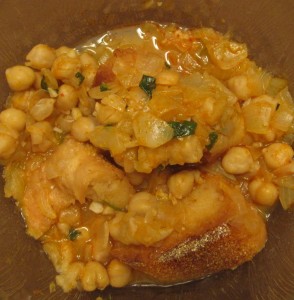 I followed the recipe, filled my house with garlic, onion and cilantro aromas, and voila!, my husband and I had a spicy, wonderfully aromatic, soothing winter soup (almost broth-like) with toasted baguette slices for sopping up all the goodies. It was wonderful.
I followed the recipe, filled my house with garlic, onion and cilantro aromas, and voila!, my husband and I had a spicy, wonderfully aromatic, soothing winter soup (almost broth-like) with toasted baguette slices for sopping up all the goodies. It was wonderful.
Now I am on the look-out for harissa – I’m curious to see how it may or may not change the recipe. I’ll let you know.
Letterpress Love: Fugu Fugu Press
- At February 25, 2012
- By admin
- In Blog
 0
0
Like a lot of folks interested in small press and handcraft, I have a deep fondness for letterpress cards. I love them for their texture, the attention to color and composition that goes into them, and the fact that they give me an opportunity to give my friends and family an honest to goodness piece of art at an affordable price. For that reason, the first thing I did when I started buying for the Nest card department was to look for the most Nesty letterpress card company I could find… Enter Fugu Fugu Press!
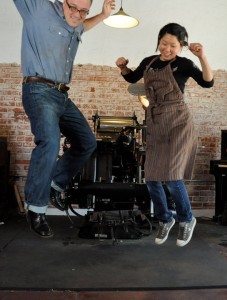 Fugu Fugu cards come to us from Ken and Shino who run a small printing press and design studio out of an old radiator repair shop in Pasadena, California. Their playful retro-cute designs are printed with soy based ink on gorgeous creamy paper with recycled content or on 100% cotton (tree-free!) paper.
Fugu Fugu cards come to us from Ken and Shino who run a small printing press and design studio out of an old radiator repair shop in Pasadena, California. Their playful retro-cute designs are printed with soy based ink on gorgeous creamy paper with recycled content or on 100% cotton (tree-free!) paper.
Fugu means “blowfish” or “pufferfish” in Japanese. Why Fugu Fugu Press? Ken and Shino just like they way they look.
 When it comes to Fugu Fugu, it’s hard for me to pick a personal favorite. I love giving the “Preggers” card to expectant parents, and the “Time to Party” card I gave my husband is now a permanent fixture on his night stand.
When it comes to Fugu Fugu, it’s hard for me to pick a personal favorite. I love giving the “Preggers” card to expectant parents, and the “Time to Party” card I gave my husband is now a permanent fixture on his night stand.
I also really love the “b-day face” card. It’s one of our best sellers!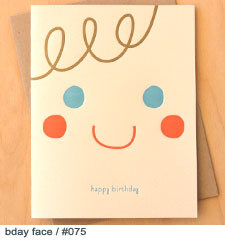
What’s your favorite Fugu Fugu Card?
Welcome to our New Blog!
- At February 08, 2012
- By nesthome
- In Blog
 0
0
As we launch our new website, we are thrilled to also launch the Nest Blog. Here, various staff members and the occasional guest blogger will discuss the goings-on at Nest, the stories behind new products, books that wow us, and portraits of our wonderful vendors and artists.
We’re excited to create a forum not only for telling you about things at Nest, but also for creating larger conversations about the joys and challenges of green living.
Thoughtful living is full of grey areas, and those of us who work at Conscious Corner wrestle with them as much as anyone — Buy local or buy organic? Tap water or bottled? Cloth diapers or disposable? One made-in-USA item or five from China? Vegan, vegetarian or locavore? We’re thinking about these things and suspect you are, too. Please join us in the conversation! We hope you’ll comment, offer insights, and ask questions.
Welcome and enjoy!
Introducing Nau
- At February 06, 2012
- By nesthome
- In Blog
 0
0
One of my great teachers, Miriam Therese MacGillis, founder of Genesis Farm in New Jersey, often says, “The alternatives must be beautiful, they must be attractive.” At Nest we strive towards that idea – may the items we offer be beautiful, attractive and appealing, as well as eco-friendly and socially just.
Our newest vendor, Nau, gets this concept. In fact, it is central to who they are.
I’ve been watching this company for several years because of their stellar reputation for eco-friendly clothing. Their initial focus was on sustainable outerwear, which wasn’t a good match for Nest. However, starting this spring, they are expanding their offerings to include streetwear for everyday life. This means cute tops, neat dresses… Beautiful, interesting and unique clothing that, oh by the way, is also sustainable.
Nau (pronounced “now”) is based in Portland, Oregon, land of all things good and greenie. For them, sustainability dictates that items be classic and long-lasting. They use natural, renewable fibers as well as synthetic fabrics containing high recycled content. They choose colors that are timeless and styles that are designed with elegantly simple functionality in mind. Nau’s clothing looks great walking around your everyday life, and also stands up to the rigors of weather and wilderness.
Our new friends at Nau are committed to the triple bottom line of people, planet and profit, and give 2 percent of every sale to humanitarian and environmental causes.
We think that what they do and what they create are terrific; we’re a little smitten. We hope you will be too!

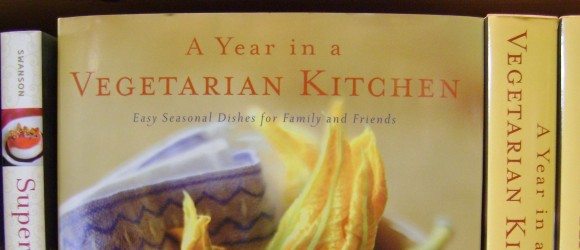
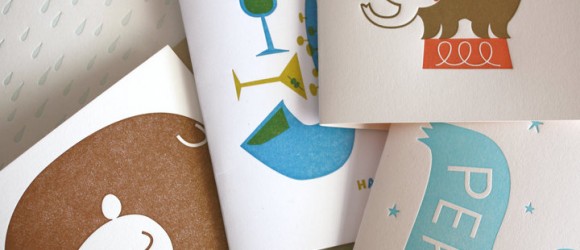
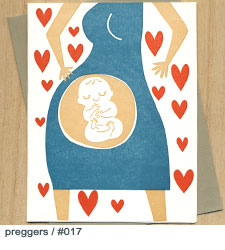
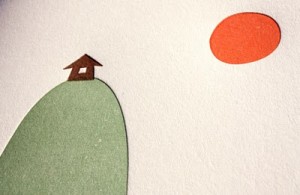




Recent Comments